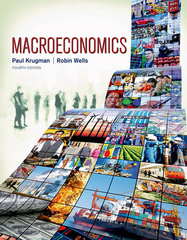Question
Until the mid-eighteenth century when spinning became mechanized, cotton was an expensive and relatively unimportant textile (Virginia Postrel, What Separates Rich Nations from Poor Nations?
Until the mid-eighteenth century when spinning became mechanized, cotton was an expensive and relatively unimportant textile (Virginia Postrel, "What Separates Rich Nations from Poor Nations?" New York Times, January 1, 2004). Where it used to take an Indian hand-spinner 50,000 hours to hand-spin 100 pounds of cotton, an operator of a 1760s-era hand-operated cotton mule-spinning machine could produce 100 pounds of stronger thread in 300 hours. When the self-acting mule spinner automated the process after 1825, the time dropped to 135 hours, and cotton became an inexpensive, common cloth.
- Provide two examples in a recent human experience that parallel's what you have read about cotton clothing.
- Explain how the two examples of recent experience are similar to what you have read.
Step by Step Solution
There are 3 Steps involved in it
Step: 1

Get Instant Access to Expert-Tailored Solutions
See step-by-step solutions with expert insights and AI powered tools for academic success
Step: 2

Step: 3

Ace Your Homework with AI
Get the answers you need in no time with our AI-driven, step-by-step assistance
Get Started


